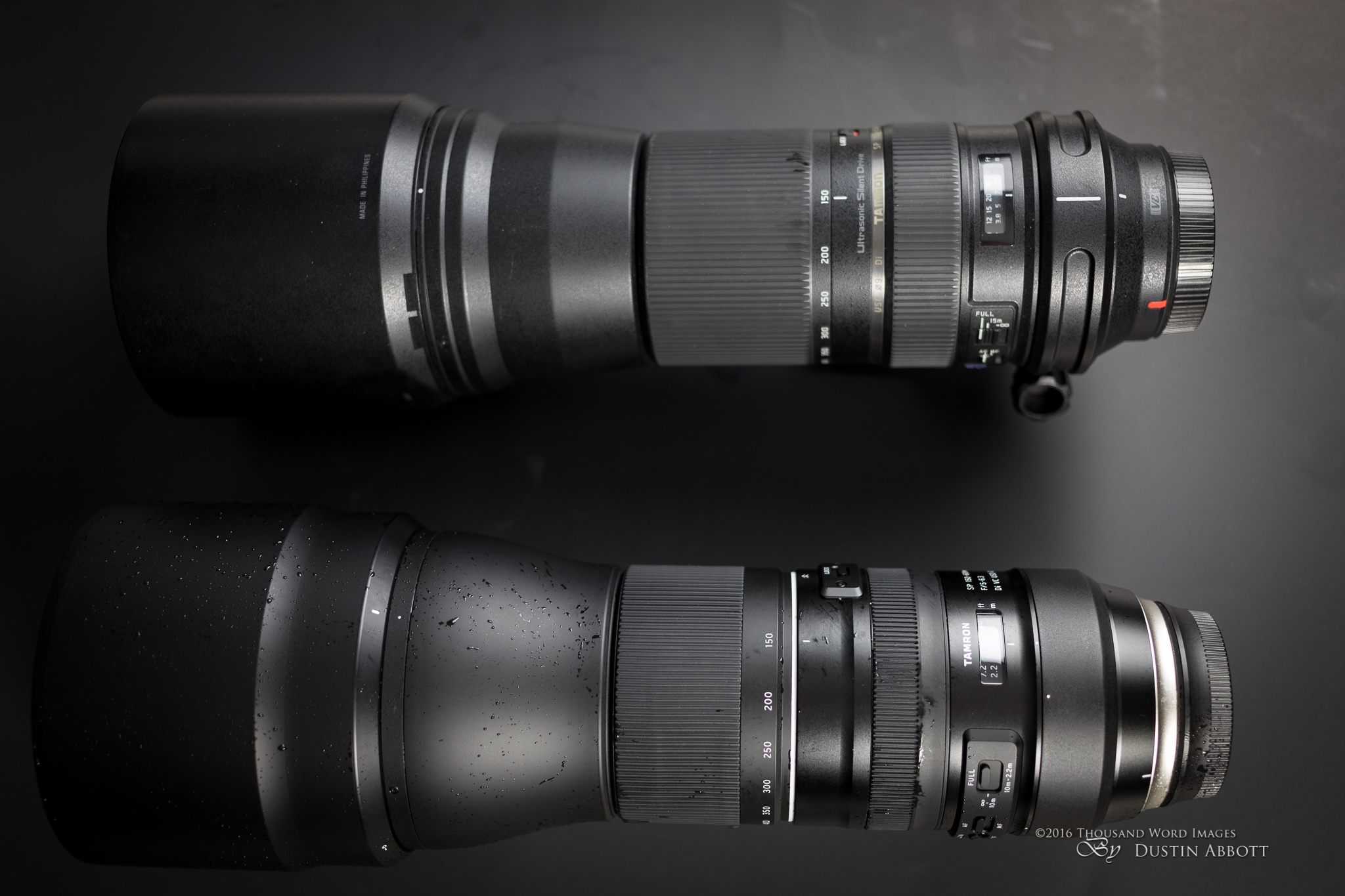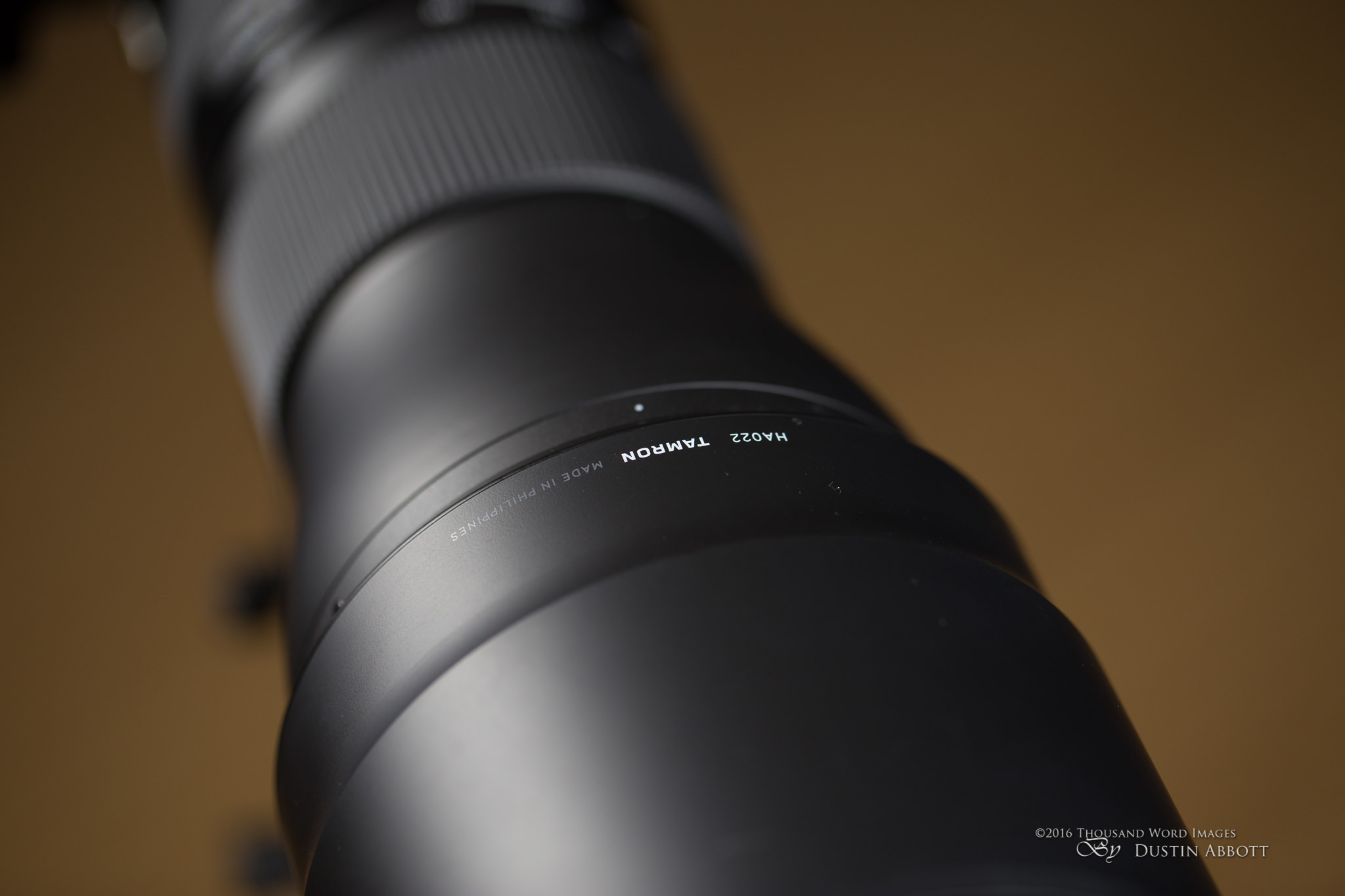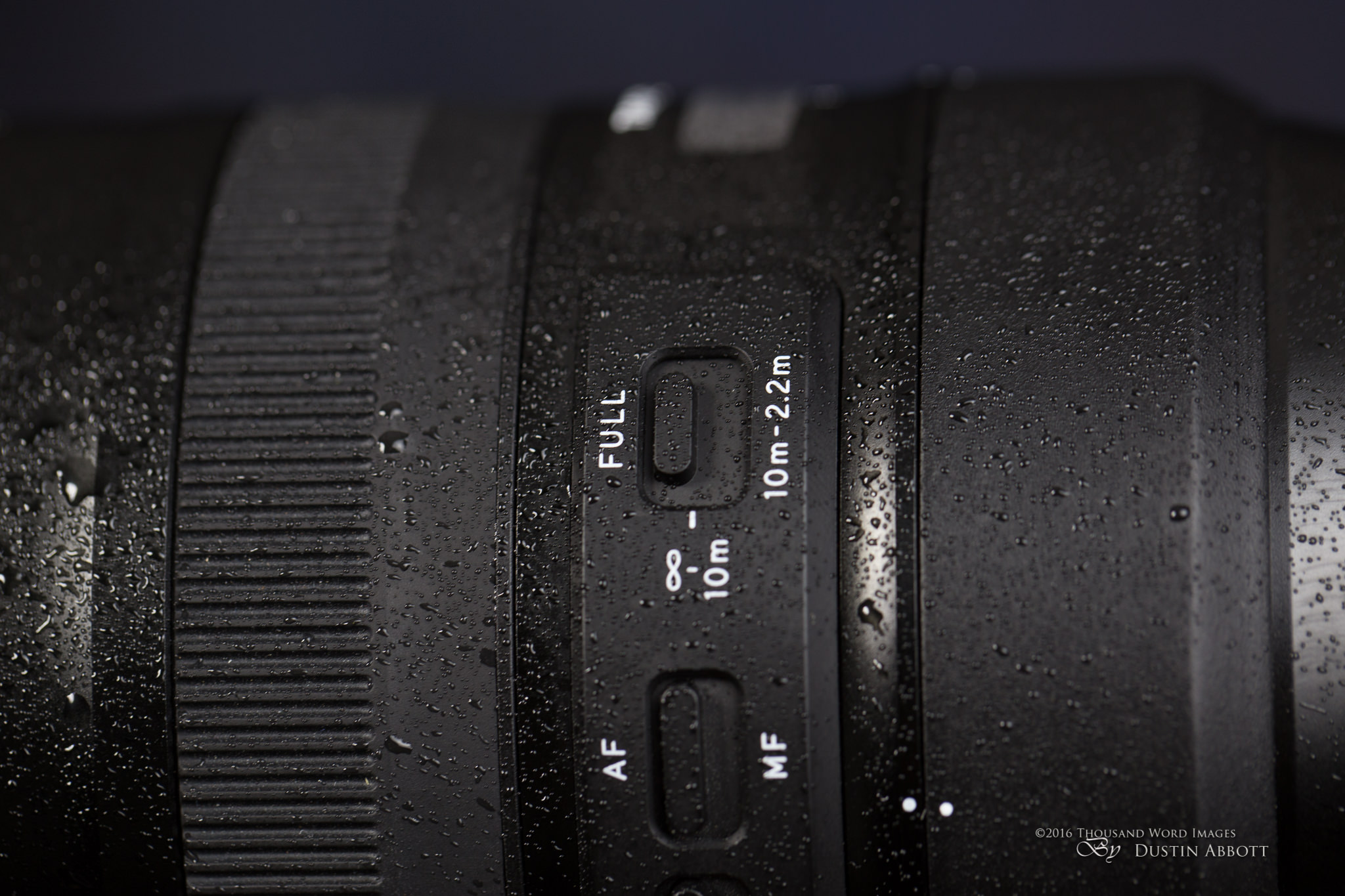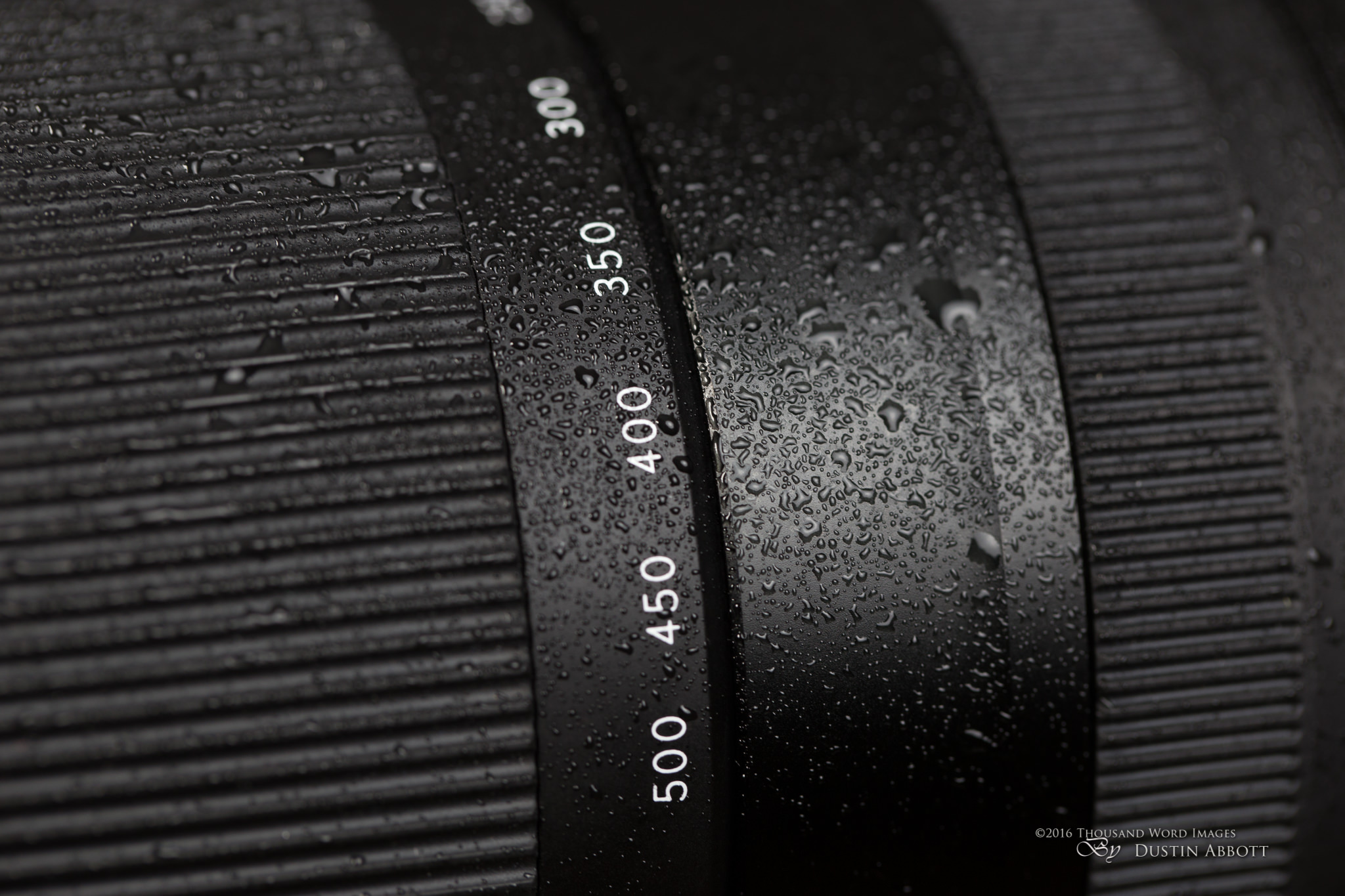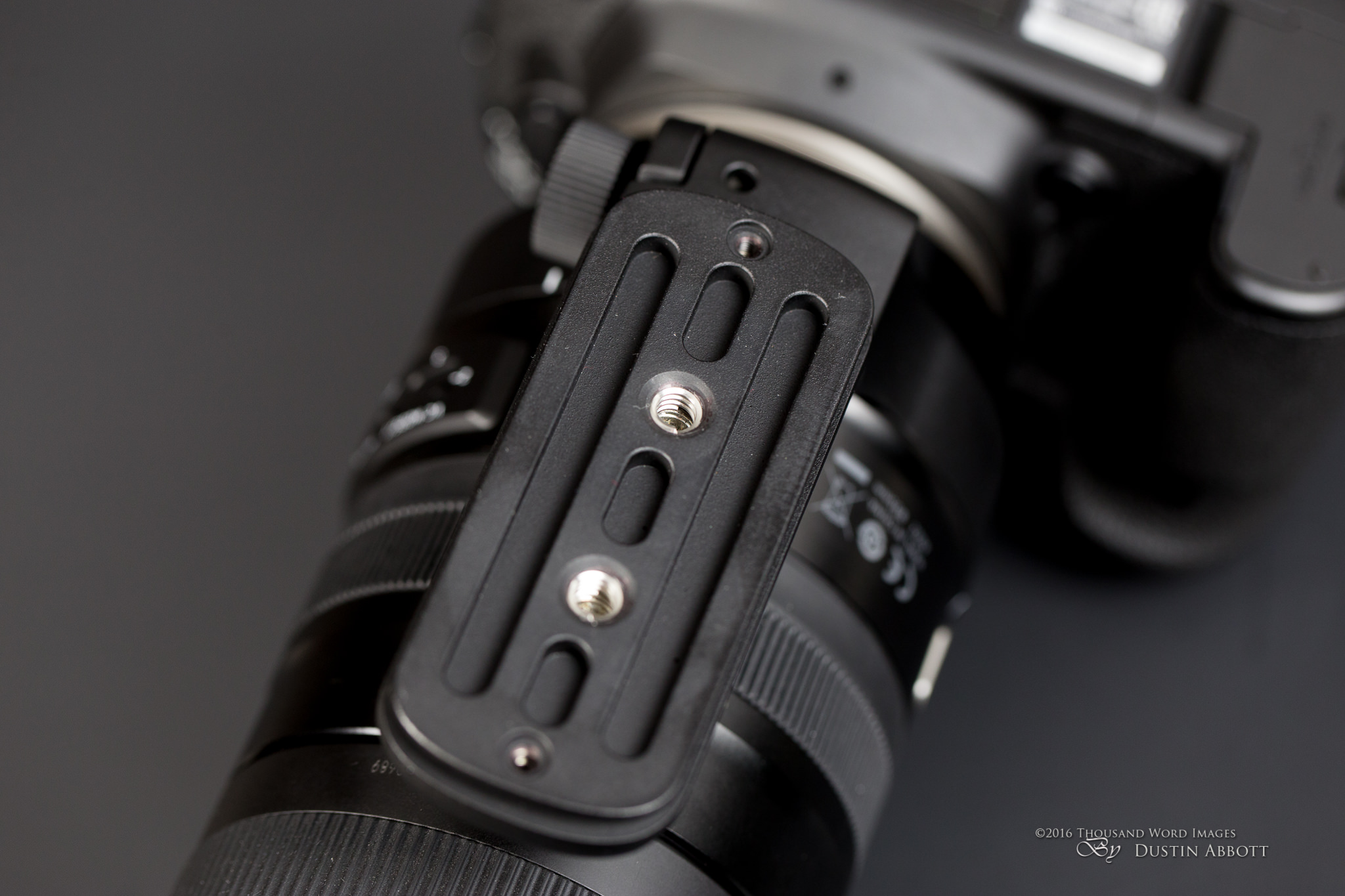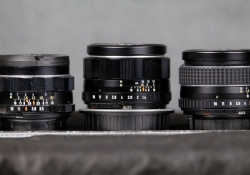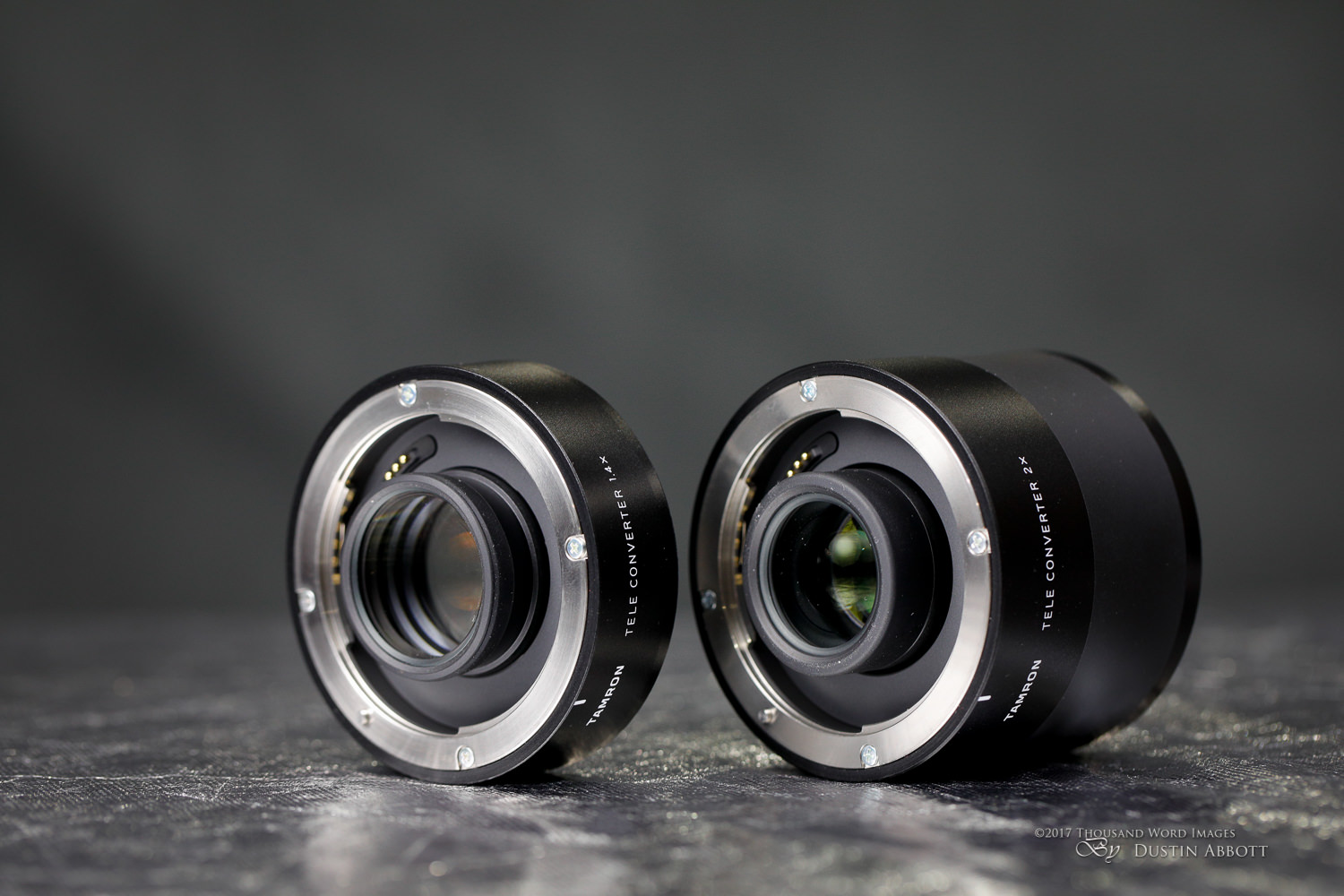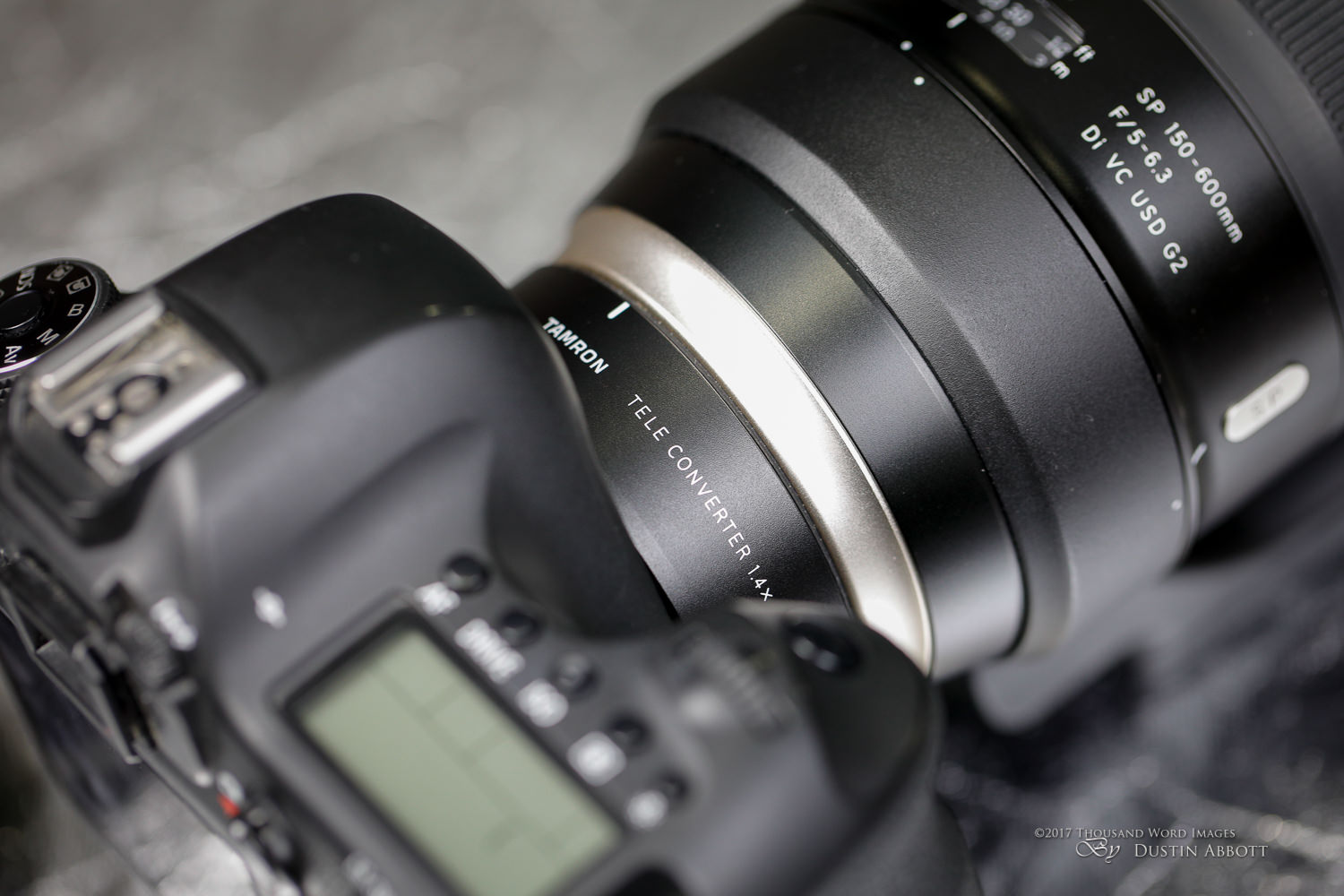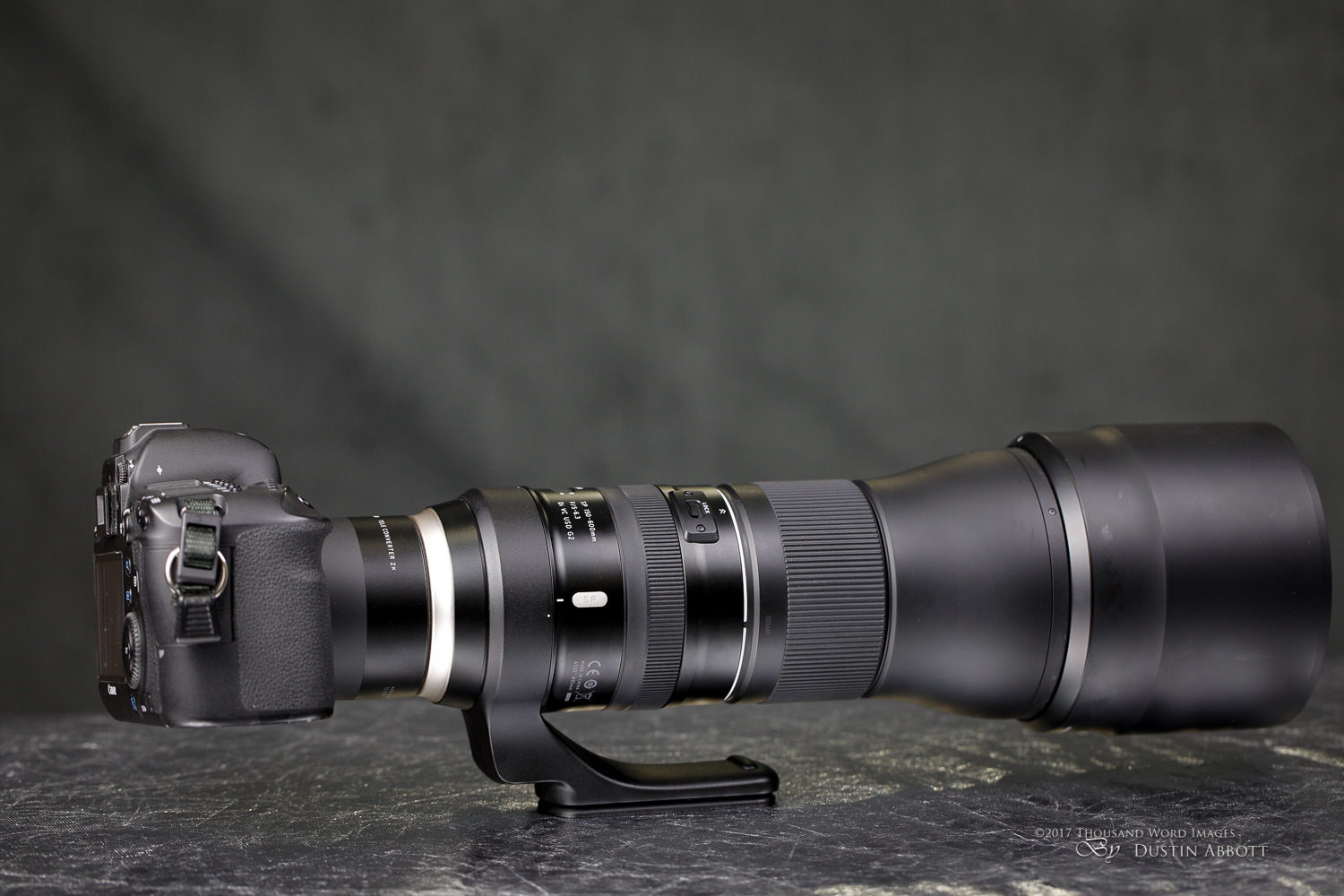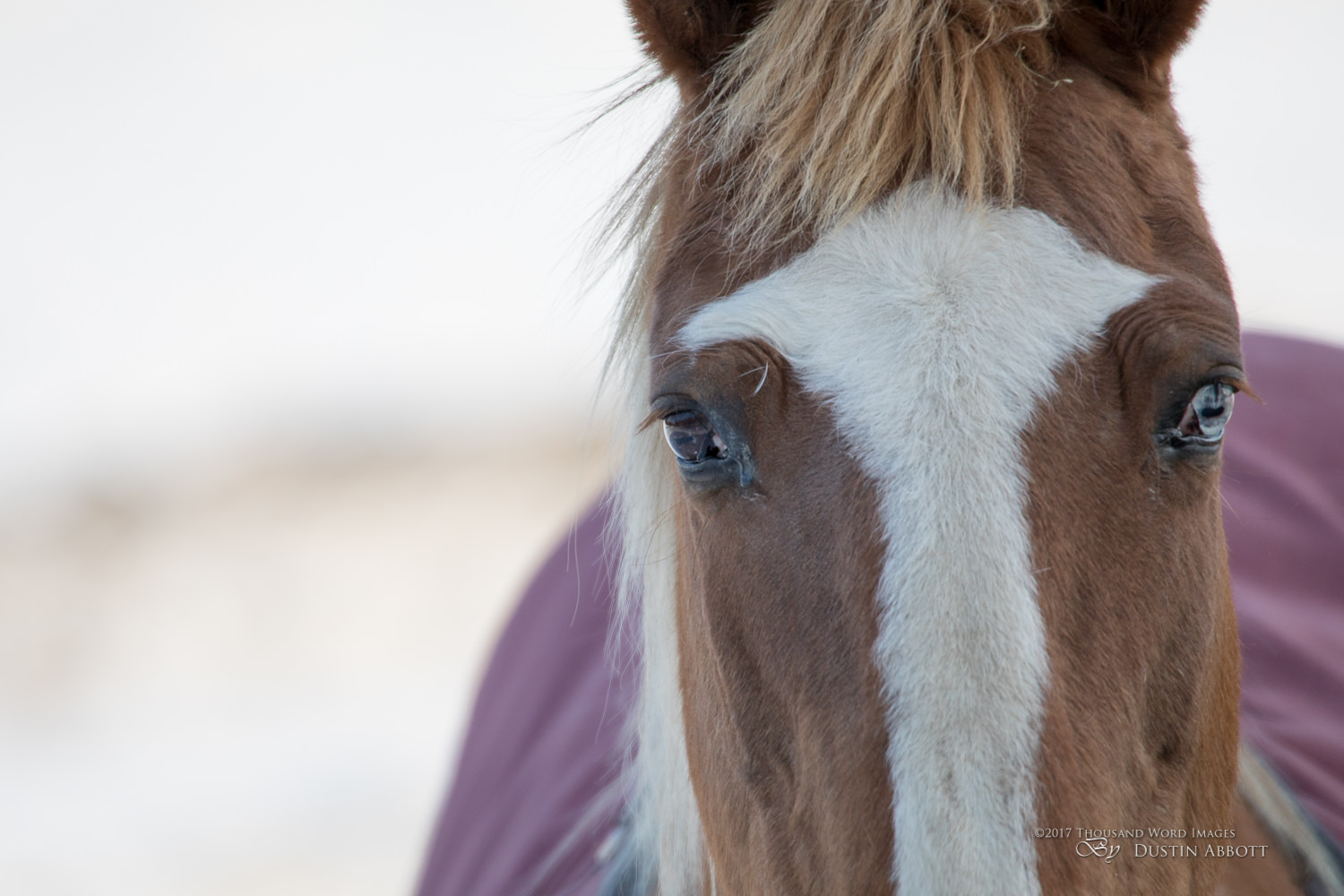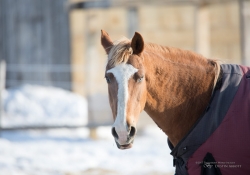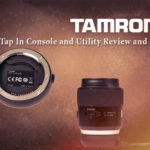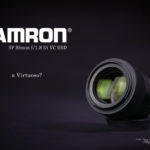I’ve already done a full review of the new Tamron SP 150-600mm f/5-6.3 VC USD G2 lens in the late fall of 2016, but at that time the lens was just coming to market and my review time was constrained by the high demand for the lens (and for review copies). As a result, there were three major things I wanted to accomplish that I didn’t get a chance to (and they were things that many of you really wanted to see.). They were, 1) to test the lens’ performance on APS-C 2) to compare the lens against the excellent Canon EF 100-400mm f/4.5-5.6L IS II which does so well with the 1.4x extender attached and 3) to test the lenses with Tamron’s new line of 1.4x and 2.0x extenders that are compatible with the lens. When I did my previous review, the extenders were not yet available and the time constraints meant that I reserved my review equipment to the full frame that the lens was designed for and against the previous generation 150-600 VC that the lens was replacing. Fortunately I have the opportunity to rectify all of that this time, so join me as a I take a second look at the 150-600 G2.
I’m attaching my breakdown on the build, design, and upgrades here, but if you read my initial review here (Tamron 15-600 G2 Review) you may want to skip over the new few sections to the 150-600 G2 on APS-C section. If you want to watch my conclusions on APS-C, performance with Teleconverters, and comparisons to the Canon 100-400L II, just click on the video below.
Serious Upgrades?
I reviewed the original Tamron 150-600 VC here, and it proved such a popular review that (at the time) it pretty much broke my website and made me invest some serious money to build a more robust site ready to handle the traffic. It was ample evidence that people were extremely interested in the “affordable reach” market. The original demand outstripped supply, and that lens has ended up in a lot of photographer’s kits. It beat Sigma to the market by a fair margin and thus enjoyed a lot of the early sales.
That lens has optically and functionally held its own even with a number of new releases since. While the Sigma variants (Sport and Contemporary) have both proven to be a little sharper at 600mm, the Tamron proves sharper at some other focus distances. For field use they all have very little variation. This article from LensRentals makes for an interesting read as it reinforces the point that while there are sharper options out there, they aren’t much sharper.
Tamron promised optical improvements in their press release that was sent to me, “Optical design refreshed to achieve even higher performance Three LD (Low Dispersion) lens elements completely eliminate axial and transverse chromatic aberrations. The design also features an upgraded optical construction (21 elements in 13 groups) and leverages improvements in manufacturing technology. As a result, the lens delivers high resolution, improved sharpness and overall better performance.”
In short, Tamron added one additional element to the optical formula. But there’s more to it than that, as I discovered when comparing the lenses head to head that the 150-600 G2 has a completely different rendering than the previous generation lens. This is definitely more than a minor tweak.
One weak point that Tamron has definitely addressed is the minimum focus distance, which I sometimes found a bit confining in the older version. It would focus down to about 8.9’/2.7m, but the 150-600 G2 will focus as close as 7.22’/2.2m. That is enough improve the maximum magnification ratio from 1:5 (0.20x magnification) on the old version to 1:3.9, or 0.256x magnification. That’s slightly over one quarter life size, and you are getting into the very useful range. Here’s a visual comparison at the difference in magnification.
You can shoot macro(ish) shots from over 7 feet away (now that is a nice working distance!!) and I found it easy to fill the frame with flowers or leaves. Be aware that depth of field at that minimum focus distance is a REALLY tiny 0.2”/5mm, and even stopped down to f/11 the depth of field is still under 9mm. I’d recommend a tripod and a lot of light to produce the best results. It’s not the easiest focal length to deal with for macro type shots (there’s a reason macro lenses AREN’T 600mm), but you can be rewarded with some nice results if you employ good technique.
Further helping is that the Focus Limiter switch has more (and better) options. The V1 of the lens had two positions: Full and 15m to Infinity. It had no option for close range shooting, and the 15m (nearly fifty feet) limiting position meant that you could easily miss shots where your subject moved a bit closer. The 150-600 G2 has three positions on the switch: Full, 10m to Infinity, and 2.2-10m. Furthermore, by using the Tap In Console, you can tweak all of these to your own liking. The compatibility with the Tap In Console is a big deal, as it eliminates one of the key advantages that the Sigma lenses held over this one. The 150-600 G2 is Tamron’s first zoom lens to be compatible with the Tap In. Here’s a look at the different screens as they apply to the 150-600 G2 (scroll to see more screens from the Tap In):
Build Improvements
Best to get the bad news out of the way: the 150-600 G2 has put on a little bit of weight. The A011 (First Generation lens) weighed in at 4.3lb/1950g, while the new version weighs 4.42lb/2010g. The reality is that this isn’t really enough of a weight gain for me to notice when switching from one to the other. The 150-600 G2 significantly undercuts the weight of the 6.3lb/2860g Sigma Sport. A friend who owns the A011 handled the G2 and asked if it was lighter, so that tells you that the weight gain definitely isn’t very noticeable. Handholding the 150-600 G2 is a piece of cake compared to the Sigma Sport as the Sport is a very front heavy lens that makes supporting the big front element (which ends up pretty far from your body at 600mm) quite a challenge (and I’m fit!) The bad news isn’t really so bad here. This isn’t a light lens, but it is fairly easy to handheld, and I suspect it will be used that way by a lot of photographers. I used it that way almost exclusively save some controlled tests and moon shots.
For that little bit of weight gain, however, you get a lens that is much better in every detail, from the build quality to the tactile feel of the materials. The A011 had a pretty decent build, but some of the materials here and there felt a little “plasticky”. Most notable was the lens hood. While the lens hood is still technically made of plastic, it is now a much more premium “soft-touch” feel that has a nice rubberized transition at the mount that feels a lot like the Sigma ART series. Those kinds of little touches are the kind that I’ve strongly praised, so perhaps Tamron was listening. The primary barrel material is a lightweight metal similar to the SP primes with a nice satin finish. All of the surfaces of the lens have a much nicer, premium feel to them, and while the lens doesn’t have the military grade build of the Sigma 150-600 Sport there is no question that this is a very nice lens that has moved upscale. I think many shooters will find this a nice compromise between weight and sturdiness.
All of the switches are much improved. Compared side by side the G2 switches all have a much nice, more definite feel. A lot of thought has been put into the tactile responses, and it shows in the quality action of the switches.
The zoom and focus rings both have a nicer feel in both the materials and in their actions. I particularly noted the improvement to the smoothness of the zoom action. The barrel extends smoothly with very consistent damping throughout the zoom range. I found that the A011 could sometimes have sticking points in the zoom action where more effort was required. The consistent damping in the zoom ring will help a lot for those that want to use the lens for shooting video, and I also noted that it helped eliminate zoom creep when the lens is pointed down.
It is actually on the topic of zoom creep (caused by the weight of the front element pulling the lens towards maximum zoom when the lens is pointed down) where one of the most notable advances has happened. The A0011 had a traditional zoom lock switch, but it could only be engaged at the fully retracted (150mm) and 400mm positions. The 150-600 G2 version of this lens incorporates what Tamron calls a FLEX ZOOM LOCK mechanism to permit locking the zoom position at any focal length. If you have ever shot a Tokina lens that uses a clutch mechanism to switch between AF and MF mode you will have a good sense of how this works. The zoom ring can be moved forward which engages a friction mechanism that holds the lens at whatever zoom position it is at. Simply pull the clutch mechanism (zoom ring) back and it releases. In field shooting it is much quicker and more intuitive to use the new Flex Zoom lock than the traditional lock switch (which is still retained if you prefer that way of locking the lens). It was the friction ring on the Canon 100-400L II that was one of the selling points for me, and the 150-600 G2 has moved much closer to that style with the Flex Zoom Lock.
One other complaint for some shooters was that the A0011’s tripod foot wasn’t compatible with Arca-Swiss style plates. On the plus side was the fact that the tripod collar could be both rotated and removed. The 150-600 G2 has a removable rotating tripod collar that features an Arca-Swiss type compatible foot which helps with using the lens atop a tripod or monopod. One more box checked.
Both versions of the lens have a large 95mm filter thread (expensive), but the Sigma Contemporary versions shares that size and the Sport moves up to an even more massive 105mm filter thread. You can’t compete with physics. If you decide to forego the front filter you will be happy to find that an expensive fluorine coating has also been applied to the front lens element to protect against dust, dirt, and smearing. The weather sealing this time around is far more robust, with a number of internal seals at key points to prevent the intrusion of dust and moisture. This compliments a rear gasket at the lens mount and coatings on the exposed elements.
Both versions have a nine bladed aperture, though the new version emphasizes the “rounded” shape of the aperture blades. The bokeh quality is noticeably softer with less hard edges when compared to the A011, although I find that I still prefer the bokeh quality from the Canon 100-400L II. At certain distances I still see a little “busyness” in the bokeh quality, although most of the time the bokeh looks quite lovely.
An electromagnetic diaphragm is used for more precise and consistent exposure control, especially when shooting at high continuous shooting rates.
All in all, the G2 (A022) shows that Tamron has been listening to the feedback of photographers and they have addressed pretty much every complaint I’ve heard about the lens. In short, the Tamron SP 150-600mm f/5-6.3 Di VC USD G2 is improved in basically every metric.
That’s not to say that everything is perfect. I didn’t feel that the VC mechanism on the 150-600 G2 that I was reviewing was operating within spec. It caused a little “jumping” in the viewfinder and didn’t seem to work as effectively as the A011 I had for comparison. All reports indicate that the VC should be MORE effective on the G2, not less. I’ve asked for a different copy to be sent to me for review in a few weeks, where I’ll review that portion again as well as test the lens on a crop sensor body (my review period was too short to cover everything I wanted to this time). I bring this up to say that Tamron still has a few glitches in the manufacturing process, though I’ve had a good experience with them listening to my personal concerns and working to get them fixed. Like the previous generation the lens is designed in Japan, manufactured in China (save the lens hood, which is manufactured in the Philippines), and distributed to me in Canada. Globalism indeed.
VC and USD
These have become two of Tamron’s modern acronyms. VC stands for Vibration Compensation, Tamron’s image stabilization system, while USD refers to the ring-type Ultrasonic Silent Drive autofocus motor. Both have received some love in the G2 version.
When I compared the VC of the A011 with the Canon 100-400L II, I found that I preferred the behavior of the Canon Image Stabilization. It provided the more stable viewfinder, even when I added a 1.4x teleconverter into the mix. The Tamron only had a VC ON/OFF switch, with no external switches for customizing stabilization. Tamron added a “silent” panning mode through firmware, but you had to rely on the lens to detect panning motion and turn off that axis of stabilization. The new lens seriously ups the ante by giving you much more control over the VC behavior. Along with the ON/OFF switch there is now a second switch with three difference VC modes.
Mode 1 (standard) is the normal mode for most shooters, though you have the option to tweak that mode via the Tap In Console. You can switch it to a “Viewfinder Priority” mode which emphasizes smooth transitions to the VC coming on and off and also keeps it engaged longer. The main priority in this mode is for video use, and it will give smoother footage.
The Mode 2 position is for panning, and ensures that if you are tracking movement the VC won’t interfere while still helping to stabilize on the Y axis.
Mode 3 is what Tamron calls “Shutter Release Priority” mode. The VC doesn’t really impact the viewfinder in this mode but rather activates just as the shutter is being released. This might be a good option for those tracking birds in flight or other movement where you want complete freedom in the viewfinder but stability when you actually press the shutter. This seems like a good choice for when using a monopod, too, and Tamron actually claims about 2/3rds of a stop extra stabilization in this mode (up to 4.5 stops).
I noted above that I didn’t feel the VC on my review copy was working within spec, so I couldn’t really perceive an advantage in my testing and noted the VC behavior was abnormal (I’ve tested a LOT of lenses with Tamron’s VC). I’ll add new notes to this review when I’ve been able to use a second copy of the lens.
Tamron’s USD is a full ring-type autofocus motor which allows for full-time manual focus override. The behavior of the USD motor in the 150-600 G2 is clearly more refined. Focus is smoother, faster, and surer. Tamron has a new line of extenders (1.4x and 2.0x) that are compatible with this lens, but I have not been able to test them as of yet. I felt like there was clearly more speed on the long end (the area of need), and didn’t notice much hunting. In the field I found that I didn’t really think about autofocus, and that speaks a lot to me. It means that the AF was doing what it was supposed to. It is also worth nothing that I felt like the AF Servo tracking was better, too. I’m not really an experienced bird in flight shooter (don’t have the patience!), but was pleased with the results I got during a brief period of tracking some geese.
One of the headline improvements is that the 150-600 G2 is compatible with the Tap In Console which allows you to tweak the focus at 24 different points. For example, you can plug in values for minimum focus, medium distance, and infinity at 150mm, 200mm, 300mm, etc… Six different focal lengths with three distance values for each. While this represents some time invested, I’ve seen the dividends with other compatible lenses. You can dial in focus better than what I’ve seen with any other third party lens before. This is a significant upgrade and helps to get the most out of the newly improved optics (read on).
While the manual focus ring feel is improved on the G2, manual focusing is still challenging due to having a rather small focus throw. It’s easy to go past the point you want to focus on. One more reason to dial in that autofocus!
The 150-600 G2 on APS-C
There are many photographers that use APS-C somewhat like a teleconverter/extender. Put an APS-C camera onto a lens like this and it acts in many ways like a 1.5x (Nikon) or 1.6x (Canon) extender. On a Canon body like the Canon EOS 80D that I’m using as a “test mule” for this review the focal length becomes an effective 240-960mm. That’s a LOT of reach, and so this is a lens a lot of people are interested in mounting on a crop sensor body. To answer the first question: yes, the Canon mount of this lens will mount on all Canon APS-C cameras with an EF-S lens mount (and via adapter on the EOS M line). And yes, the lens will autofocus on all them, too. Some cameras have better autofocus systems than others, obviously, but the 150-600 G2 is a very good focusing lens. It has good focus acquisition speed and produced repeatable results during my calibration process.
The 80D has a good focus system, and I used the lens to track action while following wildlife and horses.
Your greatest challenge using a lens like this on an APS-C body will be that this lens is a “slow” one in terms of the amount of light that it lets in. The largest possible aperture is f/5 on the wide end and f/6.3 on the telephoto end. Lenses like this work best where there is a lot of light available, and to compound things, lenses like this are often used to stop action (birds or wildlife), meaning that a fast shutter speed is required. In many situations you will be shooting at higher ISO settings, where APS-C cameras tend to struggle more than their full frame counterparts.
This lens holds up quite well optically on APS-C and provides good looking results. The first round of these affordable 150-600mm variants (150-600 VC, Sigma 150-600 C and S) surprised everyone with how good they actually were, and Tamron has managed to improve on the performance of the G1 lens particularly on the long end, where the lens exhibits better contrast and resolution (less haze and more crisp detail). Here’s a look at worst case scenario: wide open (f/6.3) at 600mm.
Center sharpness looks good here, though you can see a loss of contrast in the edges of the frame. Lower contrast seems to be the single biggest “loss in translation” from full frame to APS-C on the lens.
To give some perspective on this performance, however, let’s take a look at how it compares to the superlative Canon EF 100-400mm f/4.5-5.6L IS II lens. If we compare both lenses at roughly 560mm (Canon at 400mm + 1.4x extender) we get the following results:
As you can see the results are pretty similar. The Tamron is actually a bit sharper in the center of the frame. The only place where the Canon really bests it is on the right side of the frame, where the Canon shows a better centering. That’s actually pretty impressive, as the Canon is a fantastic lens that I personally own. My takeaway from real world use is that I prefer both of these lenses on full frame, where they show the best, but they are both fairly good on crop as well.
Use with extenders and comparison with the Canon 100-400L II
One of the key selling points of the new Tamron 150-600 G2 is the reported compatibility with Tamron’s new line of extenders (1.4x and 2.0x). These multiply the focal length by 1.4x and 2x, respectively, but at a cost of light. The 1.4x increases the maximum aperture to f/9 on the long end while the 2.0x increases the maximum aperture to f/13. Cameras require a certain amount of light to achieve autofocus, and in the past that limit has often been f/5.6. Lenses with a maximum aperture of f/6.3 have always focused fine (that is only 1/3rd stop darker), but often combinations with an extender that achieved a maximum aperture of f/8 would not autofocus. Canon and Nikon have enabled the ability to autofocus at these smaller apertures on certain bodies, but unless you have a new (two years old or less) higher end camera body (80D/7DII/D500 or 5DIV/1D series/D810/D4 or similar) you should know that you probably won’t be able to really get autofocus with an extender and any lens with a maximum aperture of f/5.6 (or 6.3).
My results come from using two of the Canon bodies best suited to this kind of combination (Canon 80D for APS-C and the 5D Mark IV for full frame, which shares the autofocus system with Canon’s flagship 1Dx II). In short, the following basically represents best case scenario for Canon shooters. I dealt with the Tamron extenders in detail in this video:
The Canon EOS 80D (APS-C) has Canon’s current best APS-C performance with f/8 autofocus with 27 of the 45 AF points available at f/8 (some other bodies that support f/8 only enable the center point). With Canon’s 1.4x III extender attached to the 150-600 G2 in my “lab” with good lighting on my focus subjects (my vintage lenses), the autofocus mostly pulsed and/or gave up. I switched to the Tamron 1.4x extender and found that while there was definitely some pulsing, the lens did accurately lock focus (though a few times it locked on an obviously defocused image). Live View fared better, for, while slow, it was steady and accurately locked focus.
With the 2.0x extender in PDAF (viewfinder) the lens just hunted. It would focus (accurately) in Live View, though with snail-like acquisition speed.
When attaching the Tamron 1.4x to the Canon 100-400L II, I noted an odd quirk. On the 80D the combination incorrectly reports as a maximum aperture of f/11 (which is what the 2.0x should register). The maximum aperture should be f/8. Because the camera detects a maximum aperture of f/11 it refuses to even attempt autofocus through PDAF. In Live View it focused slowly but surely. Here’s the quirk, though. When I mounted the 2.0x, however, it registered as f/8 and did attempt to focus through PDAF. It did a bit of pulsing, but did lock accurate focus. Live View focus was very similar to the result with the 1.4x mounted. So, for some reason the communication between the lens, TC, and body results in the aperture information being reported incorrectly. Because of this quirk the focus behavior is far preferable with the native Canon extender mounted on the Canon lens, as the Tamron extender makes for a combination that is basically useless for field use. When I tested the Canon extender + lens on the 80D I found that, other than a bit of occasional pulsing, the combination worked fairly well…particularly when choosing a single focus point rather than a group.
The story is a little little bit different on my Canon 5D Mark IV, which has a fantastic focus system with a good deal more complexity than that found on the 80D. The native Canon 100-400L II +1.4x III extender combination works with all focus points and works pretty much like that of a native lens. The same communication error is present on the 5D IV, where the Tamron 1.4x registers like a 2.0x extender and gives a maximum aperture reading of f/11. The 2.0x extender combination registers as f/8 and actually focuses fairly quickly in PDAF, though this focus was not accurate (it would need calibration). In Live View focus was slowish but very accurate.
The story is very different when using the Tamron 1.4x extender on the Tamron lens. These components were designed for each other, and the 5D Mark IV correctly registers the aperture value (f/9) and actually focused quite quickly in the controlled environment (as good the Canon combination, I would say). I had not calibrated the two components together yet, but I can tell from the results that the focus results between PDAF and Live View were close enough to just be a matter of [very minor] AFMA. I found when performing my calibration that I got basically the same values with or without the extender mounted. I swapped extenders and mounted the Canon 1.4x on the Tamron lens, and found now that the combination registered as f/6.3 maximum aperture (incorrect). When using PDAF focus I got a momentary (split second) pulse, but focus did lock. Live View focus was slower but not glacial, and it achieved perfect focus whereas the PDAF focus was a bit soft (would definitely need calibration). I would say that the Tamron combination would the better choice for field work, as focus seems to come more confidently due to correct communication between the three components. It is interesting that the Tamron extender reports correctly with a Tamron lens but not with a Canon lens (and vice versa).
Using the 2.0x Tamron combination on the 5D Mark IV (which has as good a focus system as any camera out there) resulted in unsatisfactory results. The aperture value does not register correctly (it still shows at f/6.3) perhaps to trick the camera into attempting focus (which it does, but not very successfully). The end result is a lot of pulsing and hunting before eventually a tentative lock is achieved. Live View focus is slow but possible, but the incorrect aperture value will affect metering.
When I went into the field I found using the 150-600 G2 + the 1.4x extender to be a bit of a frustrating experience. The combination doesn’t focus quickly/confidently enough to be useful if your subject is moving at all. Even with a horse walking towards me slowly I could not achieve focus lock even on the 5D Mark IV. I ended up utilizing manual focus instead, which produced more reliable results. Fortunately the MF ring on the 150-600 G2 is pretty good.
Now for the good news. Image quality is actually fairly decent with most all of these combinations (though best on full frame). The most extreme combination here is the Tamron 150-600 G2 + 2.0x on an APS-C body (effective focal length of a whopping 1920mm), but even that really looks quite good globally, though at a pixel level the images look a bit rough.
On APS-C the Canon lens + 1.4x (either one) is roughly on par with the Tamron 150-600 G2 set to roughly the same focal length (around 560mm) with perhaps the slightest edge going to the Tamron. The Tamron 2.0x delivers great optical results (if not focus results!) with the image quality with the Canon combination looking fairly similar to the results with the 1.4x. Comparing the Tamron with the 1.4x (840mm) vs. the Canon with the 2.0x (800mm) shows a fairly similar result with perhaps a slight edge to the Canon combination (note that these combinations aren’t reporting accurately in the Lightroom readout).
Here are a few real world APS-C + extender shots:
I think that this combination is pushing the limits of what I consider acceptable image quality. I personally would suggest sticking with the results from the bare lens mounted on APS-C (which already provides 960mm equivalent of reach!)
On full frame the results look even better (the 30MP full frame image is kinder than the 24MP APS-C). The 150-600 G2 actually looks pretty great even with the 2.0x extender mounted. Center performance is stronger than the edges, obviously, but even the edges look pretty good considering the 1200mm focal length (600mm x 2). The 1.4x combination looks a bit better, but I suspect that if the framing were equal the two images wouldn’t look much different.
The Canon 100-400L II + 2.0x extender image looks pretty much perfect, and looks better than the Tamron 150-600 G2 + 1.4x. The optical chops of the Tamron extenders is shown in the fact that when I compare the Canon 100-400L II images between the Tamron 1.4x and Canon 1.4x III the image with the Tamron extender looks a hair better.
To sum up: using extenders is more complicated than just looking at the end result. The image quality results are pretty good all around (exceptionally good with the Canon lens), but unless you have a camera body with an extremely robust focus system you will get extremely mixed autofocus results, and several of these combinations won’t autofocus well enough for field use. If you want autofocus, it is better to use the Canon extender with the Canon lens and the Tamron extender with the Tamron lens and skip the 2.0x extender altogether. If you need the reach but not necessarily autofocus, however, the optics in Tamron’s 2.0x teleconverter is surprisingly good and yields very good end results. I’m very impressed with the optics of these Tamron extenders, and, from what I can tell, the Tamron 1.4x yields slightly better result than the Canon version.
And now for the big comparison: when I set the Tamron bare lens to 600mm and mount the 1.4x extender on the Canon 100-400L II (560mm) I find that I [very] slightly prefer the result from the Canon combination. In the center they are virtually indistinguishable, but on the very edges there is a slight advantage for 100-400L II + 1.4x combination. If I stop the Tamron down to equal the aperture (f/8) of the Canon combination I find that the Tamron center result is sharper but the edge result still slightly favors the Canon. I doubt there is a big enough different in the result to be observable in field use.
The Canon 100-400L II is still tops for overall image quality in my mind, but it has a more limited focal range + a higher price. In real world shooting those sharpness differences are going to be pretty small, however, and if you want/need 600mm of reach (on a regular basis), I would still recommend getting the Tamron 150-600 G2 over the Canon 100-400L II + 1.4x combination despite the Canon delivering a [very] slighter better image quality result. The bare Tamron lens will autofocus (well) on all Canon/Nikon bodies, whereas the 100-400L II + 1.4x combo will only autofocus on a few, and often with limited focus points available. Using extenders requires making sure to bring it along and often means more hunting when the light dims. The Tamron has a maximum aperture of f/6.3 (only one third stop slower than f/5.6), whereas the Canon combination has a maximum aperture of f/8 (two thirds stop slower than f/6.3). It’s also worth noting that the Canon combination will cost you twice what the Tamron lens will. If you only occasionally need the reach provided by a TC combination, then the TC option is fine (that’s the category I fall into), but if you regularly need a certain focal length I always recommend going with a lens that covers that focal length natively.
In some ways I think Tamron has made a mistake in marketing the new extenders as being “compatible” with the 150-600 G2. They are physically compatible, and even optically compatible, but they actually only achieve autofocus under fairly narrow circumstances. Using TCs is somewhat complicated, and the nuances are lost on more inexperienced photographers, which is reflected in the user reviews I read here. People are claiming that they don’t work (untrue), but getting them to work relies on certain criteria being met (as we have seen). If you have a body with a higher end autofocus system you probably can use the 150-600 G2 with the Tamron 1.4x extender, but just know that you will need a lot of light for that combination. I personally feel that the lens is best used in its bare form.
Conclusion
My end feeling is pretty much unchanged after reviewing the 150-600 G2 for the second time and adding more variables into the mix. I feel like this lens offers the best overall mix of image quality, build quality, features, and usability of the various 150-600mm competitors. Canon shooters have the option of going with the Canon 100-400L II, an excellent lens, but one with a considerably higher price tag and a more limited range. It’s a lens that I really like (and own), but I rarely need a very long focal length for my shooting style and prefer the smaller size of the Canon. If you regularly need a focal length longer than 400mm, however, I think the Tamron 150-600mm G2 may be your best bet for an affordable supertelephoto option. Likewise Nikon shooters have the option of the Nikkor 200-500mm f/5.6, a very nice lens with slightly better image quality. In this case, however, the Nikkor is not only more expensive (and with a smaller focal range) but is also a good bit larger. The Sigma 150-600 Sport is also an excellent lens, but I found it personally a fairly difficult one to handhold due not only to the overall weight but the balance of the lens. As far as use with extenders: I really think that adding an extender to a lens with a maximum aperture of f/6.3 strains the limits of current focus systems. Just enjoy the lens without the extender…you’ll be happier!
In conclusion, then, while it is certainly not perfect, the Tamron SP 150-600mm f/5-6.3 VC USD G2 may be the most well rounded option in this class and should definitely be considered by those looking for a moderately priced lens that will give them a lot of reach on either full frame or APS-C.
Gear Used:
Canon EOS 5D Mark IV (5D4): B&H Photo | Amazon.com | Amazon Canada
Canon EOS 80D: B&H Photo | Amazon.com | Amazon.ca |
In Canada Tamron SP 150-600mm f/5-6.3 Di VC USD G2 (use code AMPLIS52016DA to get 5% off)
United States and World B&H Photo | Amazon Tamron SP 150-600mm f/5-6.3 Di VC USD G2
Adobe Lightroom CC Software for Mac and Windows (Boxed Version)
Adobe Photoshop Creative Cloud 1-Year Subscription
Alien Skin Exposure X2 (Use Code “dustinabbott” to get 10% anything and everything)
Purchasing your gear through B&H and these links helps fund this website and keeps the articles coming. Thank you for your support.
Great News! I can now offer a 5% discount on all purchases at Amplis Foto, Canada’s Leading Photographic Supplier. Please enter discount code: AMPLIS52016DA in your cart. It is good for everything in your cart, and is stackable with other coupons, too! It will take 5% off your entire order! Proceeds go towards keeping this site going and providing you with new reviews!
Check me out on:
Google+: | Facebook: | Twitter: | Flickr: | 500px: | Sign Up for My Newsletter :




